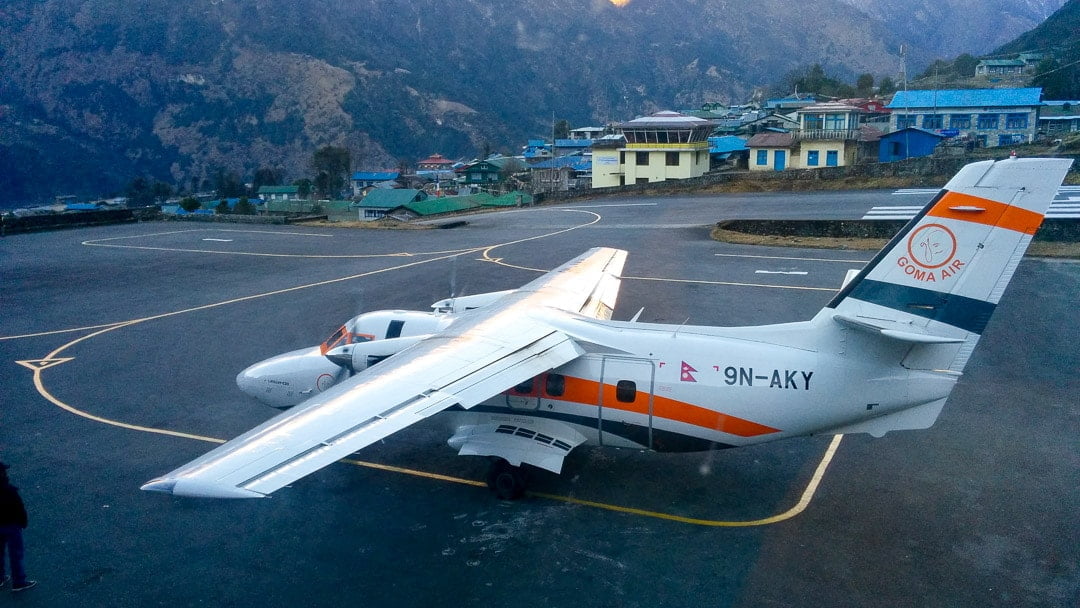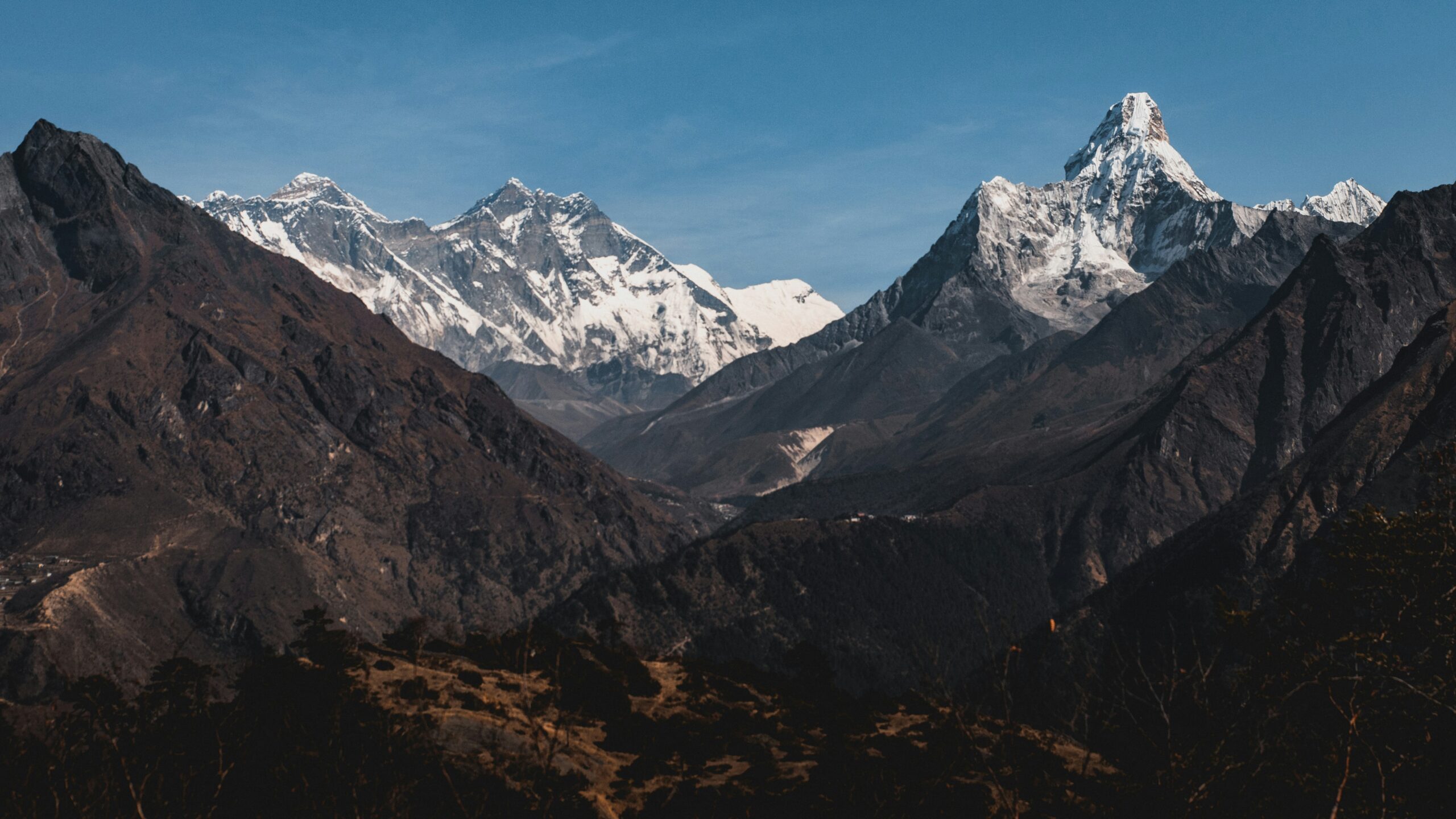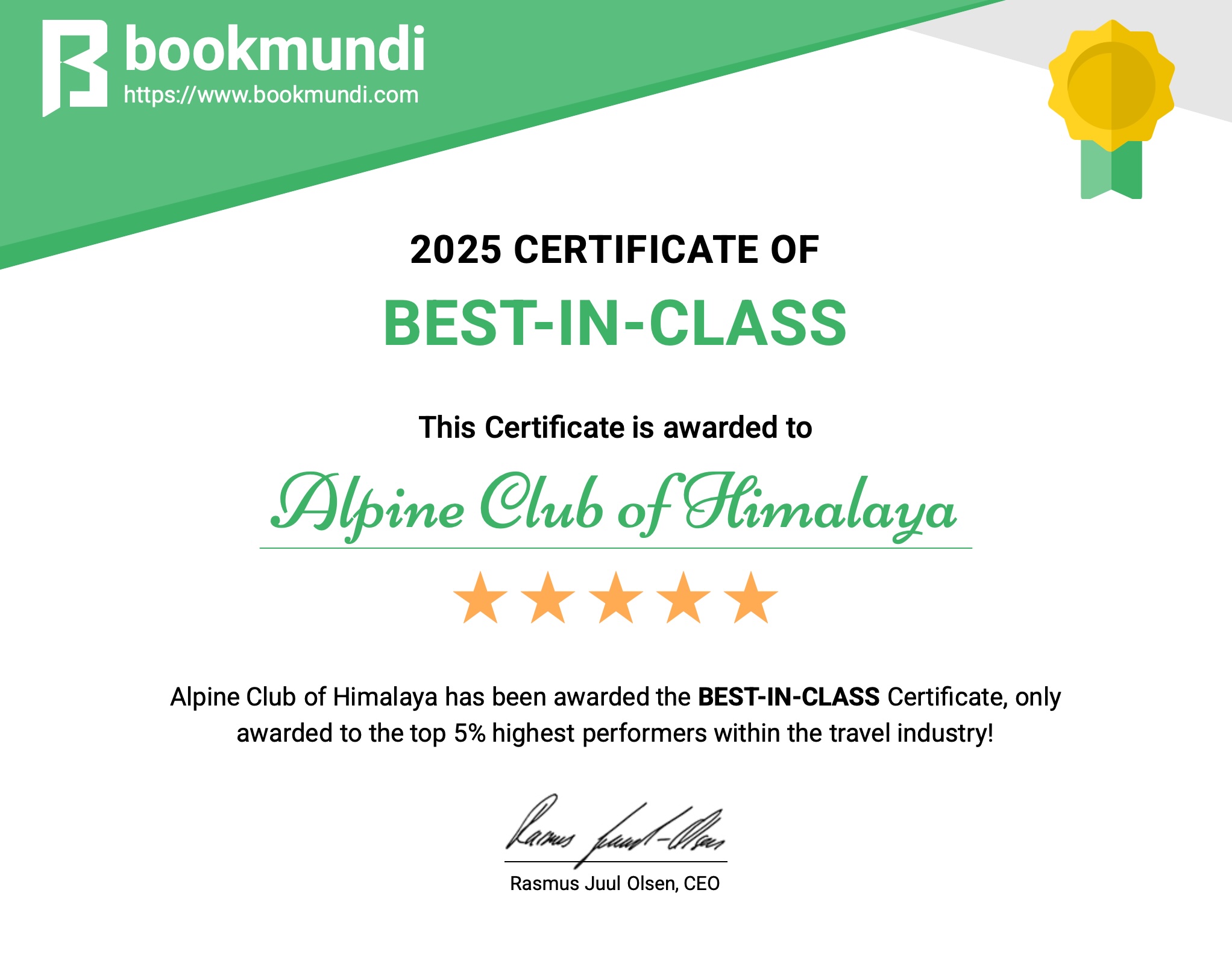Manaslu the mountain of the spirit, is also known as “Kutang”. The eighth highest mountain in the
world standing at an altitude of 8,163 meters/ 26,781 feet above sea level. Nestled in the section
of Mansiri Himal. A high subrange, of the greater Himalayan range on the west-central part of
the country. Manaslu was first brought to attention by Mr. Harold William Tilman. Who made a
reconnaissance expedition of the peak in 1950 and determine the potential route of ascent from
the northeast. The peak was first scaled by a team of Japanese expeditionists Mr. Toshio Imanishi
and Gyalzen Norbu on May 9, 1956.
Manaslu is the highest peak in the Gorkha District. Situated about 64 km/ 40 miles east of the
famous Annapurna region. The peak is boarded by the Ganesh Himal and the Buri Gandaki River
gorge on the west, on the east by the deep ravines of the Marsyangdi River, and to the south the
town of Gorkha at the foothills.
The Mount Manaslu Expedition is one of the most accessible and best 8000 meters peak
climbing. The expedition is stunning taking you across mountain country covered by towering
ridges, wide glacier valleys, and mountain peaks dominating the skyline. Although there are six
routes to the summit offering feasible approaches from all directions. Normally, most climbers
use the route of Northeast ridge to ascend, the standard fixed route. The standard route follows a
straight line to the summit, consisting of a few technical sections. The South face is regarded as
the most challenging of all. From the base camp, climbers have to pass various sections. Across
steep terrain with crevasses and moraines to camp I and camp II. From climb II traversing across
deep inclined snowy surfaces leads to Camp III. Next, the climb becomes strenuous crossing
avalanche sections to camp VI and finally to the summit.
Mount Manaslu Expedition is regarded as good training for climbers to scale the highest peak in
the world, Mount Everest. This climbing adventure not only takes you to the summit of Manaslu but
is a great way to explore all the hidden marvels of the region. Trekking across villages get insight
into the lives of various ethnic groups, traversing across woodlands witnessing the diverse
biodiversity of the region, trying authentic cuisines, and exploring unrevealed places often missed by
travelers. Be a part of this spectacular mountaineering expedition with the Alpine Club of
Himalaya, Walk of the Himalayas.
Manaslu Climbing:
The climb takes you trekking across various landscapes for 12 days to the base camp. From the
base camp, the climb is physically and mentally demanding. Prior experience is required from here,
we recommended skilled and experienced climbers only. The climbing period lasts from day 13 th
to the 31 st . Taking you across the astonishing beauty of the Manaslu region.
Manaslu Northeast Route Camps:
Base Camp (4800 meters/15,750 feet):
The Manaslu base camp nestles on a moraine with amazing views of the Greater Himalaya
Range. Camps are set up within walking distance between meeting points having strategic
viewing positions of the Manaslu massif. A dining tent, a common tent, a shower tent, and a
toilet tent are provided. Apart from that, a personal tent for each climber is provided. Hot
beverages and snacks are available at the base camp.
The climbing expedition starts with a ritual ceremony, to embark on a safe journey to the
summit. A puja ceremony conducted by the monks of the region. After the ritual is completed
head on the adventure.
Camp 1 (5500 meters/18,040 feet) 4hrs
After completion of various basic to advanced training and briefing about the climb, head
towards Camp I. The camp is nestled at an elevation of 5500 meters/ 18,040 feet. Climbing to
camp I take you across mixed terrains. Traversing across grassy slopes, rock slabs, and moraine.
Apart from that, some sections have few crevasses and ice sections on the glaciers.
The first section of the climb takes you across moraines for about an hour. Next, approach the
crampon point perched at the mouth of the glacier, which takes about 3 hours. As you cross this
section eventually reach camp I. The camp has two sections lower camp and the upper base. The
distance between the two is 100m/328ft.
Camp 2 (6400 meters/21,000 feet) 5hrs
The most technical section is regarded from camp I to camp II. The first part takes you across
snow sections for about an hour. Next, cross icefalls, several steep areas, two ladder crossings,
and steep snow climbing. This section encounters several steep ice sections of 100m at a slope of
65º. The camp perched above an icefall on a snowy terrace.
Camp 3 (6800 meters/22,310 feet) 2-3hrs
The climb to camp III is the shortest. This section has a few crevasses roughly a half meter, despite
that the climb takes you on inclined surfaces. Following the fixed ropes head towards Camp III.
The weather here can be harsh with continuous strong cold winds and direct sunlight.
Camp 4 (7500 meters/24,606 feet) 3-4hrs
As you come closer to the death zone, the short distances feel hard and demanding. The oxygen
levels are deficient at this altitude climbers may feel arduous and grueling. Traversing on a steep
snowy slope of 50-55º incline covered with layers of ice, crossing avalanche-prone terrain reach
Camp IV.
Summit (8156 meters/26,759 feet)-16-17hrs
Summit day is the most thrilling climb of the excursions. As the weather deteriorates as the day
progresses it is very crucial to start early. Most climbers climb at 1:00 a.m. If everything goes
according to plan, reach the summit between 7-10 am.
The summit climb takes you ascending through several basins with short snow headwalls. The
climb is non-technical in the early parts but as you gain altitude fixed ropes are used to reach the
summit. The climb passes a false summit and finishes on an exposed ridge of the world’s 8th
highest mountain.
After reaching the summit traversing back to Camp IV takes around 4 hours and yet
another 2 hours to eventually reach camp III. At camp III you will be staying overnight.
Entry fee and Permits:
The following permits are required for trekking to Manaslu Circuit Trek:
The permit fee depends on the season.
- Spring = USD 1800, Autumn= USD 900, Winter and Summer USD 450.
- Special Restricted Area Permit for Manaslu (Manaslu RAP): (Approx. US $30)Manaslu
- Manaslu Conservation Area Project (MCAP Permit)
i. September to November: USD 100 per person for the first seven days and an additional
USD 15 per person per day from the eighth day onwards.
ii. December to August: USD 75 per person for the first seven days and an additional USD 10
per person per day from the eighth day onwards.
- The trash fee is USD 3,000 for a group.
Accommodation:
You will be accommodated in 3-star hotels in Kathmandu. During the trek, we will be staying at
lodges/ teahouses providing basic facilities. From the base camp, you will be staying in makeshift
camps.
Meals and drinking water:
Along the Manaslu Trek, you will be provided with various Nepali and Tibetan ethnic cuisines.
The region has several tea-house along the trail run by local inhabitants providing basic and
minimal facilities.
However, drinking water taps are accessible with natural water supplies all along the trekking
trail that are untreated. So direct use of the water is not recommended. You may refill boiling
water or cold filter water from any of the teahouses along the trail.
If you buy a water purification tablet, chlorine drops, or utilize SODIS (sunlight assisted)
filtration procedures for further assurance, saving money and reducing plastic pollution.
Best Time to Visit?
The best season for trekking in Manaslu Region is during autumn and spring.
The months of September, October, November, March, April, and May are the best time to visit.
These months are better in terms of visibility and climate conditions.
During the autumn season, the months of September, October, and November are one of the best
times for trekking in this region. As the weather is clear bringing great visibility of the endless
mountain ranges and lush green forest with warm temperatures. The nights are clear and is a
perfect opportunity for stargazing.
The spring season of March, April, and May is also the best time to visit the Annapurna Region,
the end of the winter season brings a change in the region, varieties of colorful blooming trees of
the sub-alpine forest, high green pasture lands covered with wildflowers, mild temperatures, and
clear weather. In this season you will witness herds of sheep and yaks grazing in the green high
lands.
Monsoon season is not favorable as the weather gets harsh and it’s hard to get around the
country, with frequent rainstorms and landslides. So, monsoon season is mostly avoided by
trekkers.
In the winter season. Manaslu Region receives high snowfall covering most of the trails and
making it impossible to travel for this reason.
Travel Insurance:
All clients participating in any activity must have travel insurance. Personal injury, death,
hospital expenditures, repatriation fees, and helicopter rescue. Any other disease covered by the
insurance plan will be given. We highly advise you to acquire a comprehensive insurance plan
from a trustworthy insurance company.
Passport and Visa:
Every client must have a valid passport from the return date with a 6-month prior validity by the
Nepalese consulate in your country or the immigration office at Tribhuvan International Airport in
Kathmandu.
Equipment lists:
General Equipment required:
- Find the guidelines regarding essential trekking gear.
- Daypack above 40 liters. (Must be waterproof)
- Down jacket (rental available)
- Warm sleeping bag (rental available)
- Sun head, gulf cap, sunglasses, headlamp, and torchlight.
- Ear-muffs, wooly Hat, Fleece Balaclava
- Sun Lotions/sun cream.
- One pair of liner gloves is thin wool and synthetic.
- Cotton t-shirts, Synthetic t-shirts.
- Thermal Top, Fleece Sallopettes, Thin Fleece
- Body Warmer – Thick Fleece -Schoeller Trousers
- Long-sleeve polyester or synthetic lightweight for sunny days.
- One Soft-shell jacket (water & wind resist)
- Inner clothes as your requirement.
- Liner socks, woolen socks.
- Proper trekking shoes, Sandals
- Imodium or Pepto Bismo capsules for upset stomach or diarrhea.
- Diamox for altitude sickness. The guide will help you to take it.
- One small personal-sized first-aid kit with blister treatments such as moleskin, bands,
- anti-infection ointments, and muscle relief ointments
- Wet wipes
- Vitamin Tablets
Technical Equipment required:
- Ice Axe, Ice Hammer
- Harness, Crampons, Ice Screws
- Belay Plate, Jumar and Ropeman, Prussicks
- Rack – Tat + Maillons – Abalokov Threader
- Head Torch x 2 – Spare Batteries + bulb – Rope
- Helmet – Radio + Batteries – Spare Pick
- Repair Kit (tape, superglue, string, cable ties, strap, needle, thread, leatherman with pliers)
Important Note:
Your safety is of paramount importance to us at the Alpine Club of Himalaya. We have the
absolute authority to cancel the trip or change the itinerary, when deemed necessary or when we
have reason to believe your safety is at stake. Weather conditions, the health condition of a group
member, natural disasters, and such, can contribute to changes in the itinerary when traveling in
remote mountainous regions. In these extreme situations, we kindly request that you offer your
full cooperation to the trusted leader of the group appointed by the Alpine Club of Himalaya.
However, we assure you that we will make every effort to keep to the above itinerary.
If you have any inquiries or require assistance and further information about this trip or any other trips, please feel free to contact the Alpine Club of Himalaya – Walk of the Himalaya.
NOTE: All of the aforementioned trekking hours are approximations and should only be
used as a general guideline.
Overview
Important Note :
Your safety is of paramount importance to us at Alpine Club of Himalaya. We have the absolute authority to cancel the trip or change the itinerary, when deemed necessary or when we have reason to believe your safety is at stake. Weather conditions, the health condition of a group member, natural disasters, and such, can contribute to changes in the itinerary when traveling in remote mountainous regions. In these extreme situations, we kindly request that you offer your full co-operation to the trusted leader of the group appointed by Alpine Club of Himalaya. However, we assure you that we will make every effort to keep to the above itinerary.
Trip Highlights
- Ascend the eighth highest peaks in the world.
- Traverse across various landscapes and microclimates.
- Explore isolated villages frozen in time.
- Learn about the rich culture and traditions of the indigenous people.
- Witness views like never before.
- Thrilling and adrenaline rush Adventure.



















Write a Review